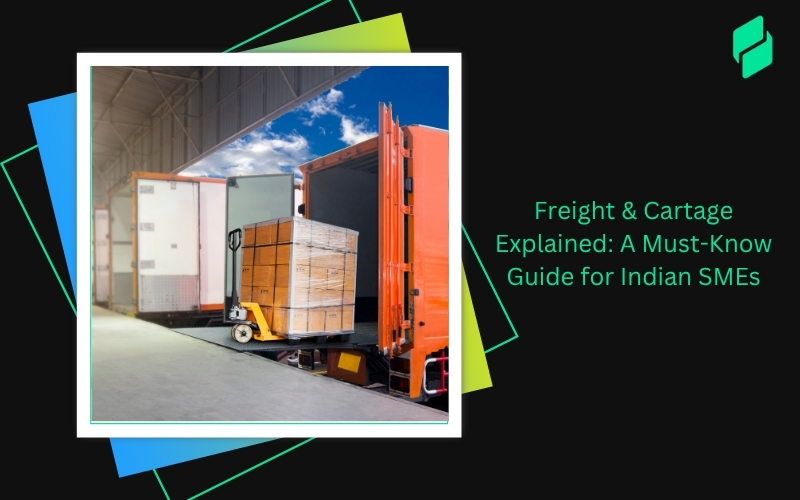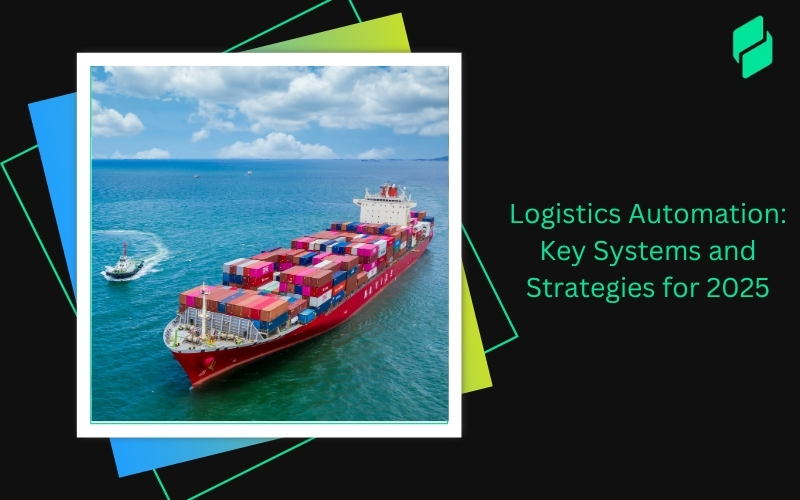Optimize your business: use unlimited savings with Pazago fulfilled now!
Get Started ->Physical cargo inspection is critical to international trade. It ensures that goods moving across borders comply with the applicable regulations and standards.
This process is essential to maintaining the integrity of the cargo, detecting discrepancies, and validating the information provided in the shipping documentation.
Below, we'll walk through the detailed steps of a typical physical cargo inspection process.
What is Physical Cargo Inspection?
At its core, physical cargo inspection involves examining imported or exported goods to verify their quantity, quality, and compliance with customs regulations.
This process occurs at designated inspection sites such as ports, container freight stations (CFS), or inland container depots (ICD), which are approved customs areas.
Detailed Physical Cargo Inspection Process

The physical inspection of cargo is an essential process that ensures the smooth movement of goods through customs. It verifies that the cargo complies with all shipping and customs regulations and the declarations made in the shipping documents.
Below is a step-by-step breakdown of the cargo physical inspection process, including detailed guidelines for import and export operations.
1. Documentation Review
The first step in the inspection process involves verifying all shipping documents. These typically include:
- Bill of Entry
- Invoice
- Packing List
Customs officers thoroughly cross-check these documents to ensure that the goods' value, quantity, and weight match what has been declared. Accurate documentation is crucial to avoid any delays during the inspection.
Also Read: 10 Required Pre-Shipment Documents for Export Procedure and Shipping Process
2. Random Selection of Packages
After the document review, customs officers randomly select packages for physical inspection. Generally, 2% of the entire consignment is inspected, with a minimum of two packages and a maximum of 20 being chosen.
The goal here is to ensure that the selected goods match the shipping documents, allowing for efficiency while maintaining thoroughness.
Also Read: Different Types of Packaging Materials and Their Uses
3. Visual and External Inspection
At this stage, the customs officers visually inspect the selected packages. They check for visible markings, seals, and numbers, ensuring these align with the shipping documents. This step helps to detect any apparent discrepancies, such as wrong labels or damaged goods.
4. Opening and Examination
The selected packages are then opened for a more detailed inspection. Officers verify:
- The contents
- The quantity
- Any potential restricted or illegal goods
This step ensures that the goods inside the packages meet the requirements set out in the customs documents and are safe for transport.
5. Weight and Quantity Checks
Customs officers may weigh the goods and cross-check the quantity to confirm it align with the declared values. Ensuring accuracy in weight and quantity is vital for proper tax and duty assessment, especially in cases where discrepancies could lead to financial penalties or shipment delays.
Also Read: Understanding Verified Gross Mass (VGM) in Shipping
6. Sampling for Further Testing
Certain products—such as chemicals, food items, or pharmaceuticals—may require additional testing. These samples are securely sealed and sent to laboratories to verify compliance with quality, safety, and legal standards. This testing ensures the safety of products before they enter the market.
7. Recording the Examination Report
Once the physical examination is completed, customs officers record the findings in the Indian Customs EDI System (ICES) or another relevant digital platform. The report includes:
- Any discrepancies
- Shortages or excess goods
- Additional actions required
The relevant customs authorities endorse the officer who conducted the inspection signs the report and it. This report serves as the official record of the cargo inspection.
Also Read: What is a Fumigation Certificate and its Requirements for Export Goods?
8. Handling Discrepancies
In cases where the physical inspection results do not match the declared documentation, the Appraiser refers the case to the Assistant Commissioner/Deputy Commissioner of Customs (Exports). At this point, the exporter or their agent is instructed to resolve the discrepancy with the customs authorities before the goods are cleared for export. The issue can range from minor quantity discrepancies to more severe concerns like undeclared goods.
9. Final Report and Clearance
Once all documents are reviewed and approved and any discrepancies resolved, the final clearance is granted via the computer system. The customs clearance is tracked through systems like ICES, allowing transparency and oversight. The goods are then free to continue their journey.
10. Post-Inspection Repackaging
After the examination, the exporter or their clearing agent repackages the goods. Proper repackaging ensures that the inspected goods are secured for transport and helps maintain their integrity until they reach the final destination.
Also Read: Dunnage: Its Importance, Uses, and Different Types in Shipping
11. Dispute Resolution
If a dispute arises regarding the customs findings, the following steps are taken:
- Agreement: If the exporter agrees with the customs assessment, the Shipping Bill is processed as per the findings.
- Disagreement: If the exporter disputes the findings, they are allowed to present their case. Customs authorities follow the principles of natural justice, allowing both sides to resolve the issue fairly.
Once the dispute is resolved, the shipment is either cleared or additional actions are taken based on the outcome of the resolution.
Why Is Cargo Physical Inspection Important?

For businesses involved in frequent international trade, a thorough cargo inspection can save you time, money, and potential legal headaches. Here’s why:
- Prevents Costly Delays: Catch issues early, such as damaged packaging or regulatory non-compliance.
- Ensures Accurate Documentation: Avoid fines or shipment rejections by ensuring the goods match the shipping documents.
- Mitigates Risk: Protect your supply chain by adhering to global trade laws and minimising the chances of shipment holds at customs.
What is Cargo Screening?
Cargo screening examines shipments, often using advanced technology, to ensure that the contents meet security, safety, and regulatory requirements.
This procedure is crucial for global trade, where providing the safety of goods and detecting contraband or other illegal items is a priority for both importers and exporters.
Process of Cargo Screening
Cargo screening is an information-gathering method that enables authorities to detect discrepancies, hidden threats, or contraband in shipments. This process often begins with reviewing the shipping documentation and manifest information.
Automated systems such as RFID tagging help link the manifest data to the physical cargo, speeding up the screening process.
Methods Used for Cargo Screening
1. Automated Targeting Tools: Customs authorities use automated targeting systems to identify high-risk shipments. These systems analyse shipping data, cross-referencing it with known risk factors to flag suspicious cargo for further inspection.
2. X-Ray Machines: One of the most common tools used in cargo screening is the X-ray machine, which can penetrate dense materials to provide a clear image of the cargo’s contents. X-ray screening is fast and allows for efficient detection of anomalies without opening containers. Advanced X-ray systems offer high-resolution images, critical in detecting contraband or non-compliant goods.
3. Gamma-Ray Machines: Although less commonly used today, gamma-ray machines are still deployed in certain settings. These systems effectively detect specific threats, such as radioactive materials, but have lower penetration than X-ray systems.
Due to safety concerns and evolving technology, more advanced X-ray equipment is increasingly replacing gamma-ray systems.
4. Radiation Detection Devices: Neutron and gamma radiation detectors often identify nuclear or radioactive materials within cargo. These devices are essential for screening goods at border crossings, ports, and airports where the risk of smuggling such dangerous materials is higher.
Also Read: Form Guides for Shipper's Declaration of Non-Dangerous Goods
Importance of Cargo Screening
Cargo screening is essential not only for safety and compliance but also for expediting the logistics process.
Ensuring that all cargo is screened and cleared before boarding it prevents delays and potential legal issues, thereby supporting the smooth flow of goods across international borders.
Cargo screening ensures that international shipments meet security standards while preventing illegal smuggling.
Also Read: Understanding Marine Cargo Insurance and Freight Liability
Crago Screening vs. Physical Cargo Inspection: Key Differences

These two processes serve distinct purposes and are applied at different stages of cargo handling. Understanding the difference between screening and inspection can help businesses optimise their operations while maintaining efficiency and compliance.
Here’s a table that highlights the critical differences between Cargo Screening and Physical Cargo Inspection:
Introducing Pazago: Your Trusted Cargo Inspection and Customs Clearance Partner

Ever wondered how some companies glide through customs and deliver flawless shipments every time?
Meet Pazago, your trusted partner in cargo physical inspection and customs clearance. With a unique blend of digital innovation and hands-on expertise, Pazago ensures that your international shipments are compliant and always arrive on time.

Key Features of Pazago:
- Real-Time Tracking: Keep an eye on your shipments across 180+ shipping companies, ensuring full control.
- Document Management: No more paperwork headaches. All your documents are securely stored and easily accessible.
- Customs Clearance: Streamline the customs process and avoid delays with Pazago’s efficient solutions.
- Proactive Alerts: Stay ahead of potential issues with instant notifications.
- Unified Communication: Centralized communication keeps all stakeholders connected and responsive.
- Reliable Shipping: Partner with top-tier shipping lines for secure and timely deliveries.
- Cargo Inspections: Access a global network of expert inspectors for thorough inspections, ensuring compliance and quality.
Why Choose Pazago?
- Global Reach: Operating in 110+ countries, Pazago easily supports your international operations.
- Efficiency: Reduce costs by 20% and cut turnaround times by half.
- Scalability: As your business grows, so does Pazago—adapting to your needs at every stage.
They say, “In global trade, every detail matters.” 🌍 At Pazago, we go beyond managing your cargo inspections and customs clearance—we simplify and optimise your entire import and export process 🚢📦.
Ready to take your international operations to the next level? 🚀
Visit Pazago today and see how we can transform your supply chain from start to finish. Don’t just ship—ship smarter with Pazago! ✨


.png)








